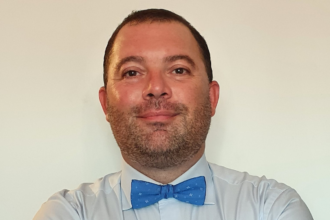B2E Technological Sonar Initiative #14
B2E presents the fourteenth edition of our Technological Sonar initiative, a monthly selection of national and international initiatives to retain, within the scope of new patents and technologies in the blue bioeconomy sector.
Aquaculture
- Smart aquaculture system using mobile camera
The work designs and implements a unique aquaculture monitoring system based on loT. Both Wi-Fi and Internet are combined in this system for convenience. The work finds a way to give better result with low cost than other available systems. Aqua farmers can avoid time consuming manual testing now.
In Patentscope.
Discover more here.
- Jumpstarting Ireland’s seaweed success
Jumpstarting Ireland’s seaweed success In three years Ireland’s Pure Ocean Algae has domesticated a wild dulse, a red seaweed species, and created a fully-fledged macroalgae value chain. The Fish Site sat down with founder Michael O’Neill to learn more about his processes and Ireland’s potential as a global seaweed hub.
In The Fish Site.
Discover more here.
- Single-cell protein dressings for bream: healthier and more sustainable
A study carried out by researchers from the University of Bologna, in Italy, provides new scientific evidence on the potential of bacterial protein to be incorporated into sea bream feed to replace vegetable sources, mainly soybean and corn protein concentrate.
In Mis Peces.
Discover more here.
- Supercooling of salmon, a technique that allows the industry to save 143 million euros
NOFIMA researchers calculate the savings that the supercooling technology could represent for the transport of salmon by land and air.
In Mis Peces.
Discover more here.
Living Marine Resources
- Biomaterials and Bioactive Natural Products from Marine Invertebrates: From Basic Research to Innovative Applications
In this review, we analysed the literature of the years 2010–2019 on natural products (bioactive molecules and biomaterials) from the main phyla of marine invertebrates explored so far, including sponges, cnidarians, molluscs, echinoderms and ascidians, and present relevant examples of natural products of interest to public and private stakeholders.
In NCBI.
Discover more here.
- Marine compounds for melanoma treatment and prevention
In this review, we report marine compounds from micro- and macro-organisms with activities in vitro and in vivo against melanoma, including the compound Marizomib, isolated from a marine bacterium, currently in phase III clinical trials for melanoma. When available, we also report active concentrations, cellular targets and mechanisms of action of the mentioned molecules. In addition, compounds used for UV protection and melanoma prevention from marine sources are discussed.
In NCBI.
Discover more here.
- Aker BioMarine drives initiative to increase the proportion of krill and other raw materials currently used in fish feed formulas
Aker BioMarine, in partnership with LetSea and Nofima, submitted its application to the Norwegian Directorate of Fisheries to conduct research within salmon farming and aquafeed.
In Aquaculturemag.
Discover more here.
- Can algae and fish waste be the next flexitarian superfoods?
A new project is looking at making hybrid food products that combine seaweed, microalgae, insect meal and/or fish byproducts with protein-rich plant ingredients. Key byproducts being examined include fish heads and bones which are otherwise discarded or used in low-value feed products. The researchers will also try to improve the texture and nutritional profile of plant products by adding seaweed, microalgae and insect larvae – raw materials that are towards the bottom of the food chain or would have gone to waste.
In The Fish Site.
Discover more here.
Marine Biotechnology
- Orthodontic adhesives and methods of using same
An orthodontic adhesive includes components capable of allowing easy debonding of an orthodontic device from a patient’s tooth. The adhesive includes an engineered marine mussel protein.
In Patentscope.
Discover more here.
- Semi-synthetic powdery material obtained by modifying the composition of a natural marine biomaterial, method for manufacturing same, uses thereof
The present invention relates to the use of insoluble and soluble biopolymers extracted from the organic extraction of the internal aragonite layer and/or the external calcitic layer of the shell of bivalve molluscs chosen among the Pinctadines in general and in particular Pinctada maxima, margaritifera, and the Tridacnes: Tridacna gigas, maxima, derasa, tevaroa, squamosa, crocea, Hippopus hippopus, Hippopus porcelanus.
In Patentscope.
Discover more here.
- Organic matter processing in a [simulated] offshore wind farm ecosystem in current and future climate and aquaculture scenarios
This study investigates the combined pressures of climate change and the planned co-location of offshore wind farm (OWF) and aquaculture zones on the carbon flow through epifaunal communities inhabiting wind turbines in the North Sea.
In Science direct.
Discover more here.
- Marine biodegradation promoting additive and marine biodegradable resin composition including same
The present invention is characterized by being: a marine biodegradation promoting additive containing a nitrogen compound and a phosphorus compound; a marine biodegradable resin composition including said additive; and a method for adding a nitrogen compound and a phosphorus compound to degrade a biodegradable resin composition. This method does not require the use of specific isolated microorganisms, specific seawater having a high concentration of microorganisms, etc.
In Patentscope.
Discover more here.





